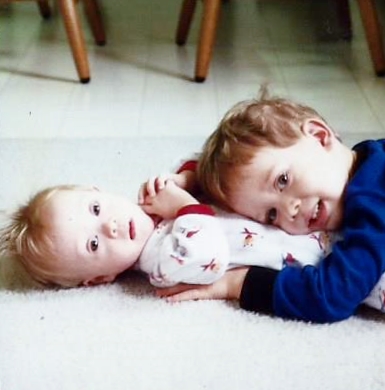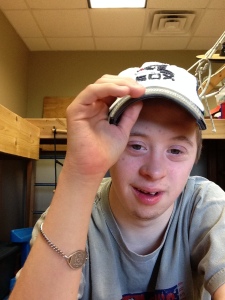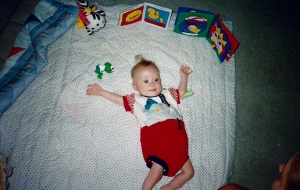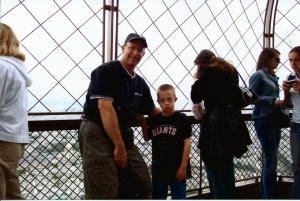Blog #197~My son with Down syndrome 24 years ago: What I learned

Birthdays are often a time to reflect back on our journey in life. My son Nick, will be turning 24 years old next week. I didn’t know until after he was born, that he had Down syndrome. Honestly, I was more concerned for his health more than anything. After a week in ICU, Nick was released. The doctor told us to go home and love are baby. He cautioned me that Nick might not be able to nurse properly and gain weight without having to use a feeding tube. I thought to myself, “game on, challenge accepted”. I rolled up my sleeves and got to work. I hated all those wires that had been hooked up to him in ICU. I certainly didn’t want any more hooked up to my son, moving forward.
The feeding tube never entered the equation. Instead, what I found is that we had to work harder to be successful not only in feeding, but in reaching all developmental milestones. Within 8 weeks, Nick started an Early Childhood Intervention (ECI) program. Low muscle tone is a trait of having Down syndrome. The physical, speech and occupational therapists along with his teacher provided strategies to help build strength and endurance. More important, they gave us pragmatic ways to incorporate these at home in our daily routine.
Nick propped in high chair, supported with a bolster under his legs and pillows on the sides…..

That is how it all started 24 years ago, with Nick. I’ve learned a few things while raising my son especially in the early years. First, is that the developmental milestones take longer to hit, but each mark was met with hard work and persistence. In addition, find the people and resources that will facilitate, motivate and help to modify your child’s environment to allow them to grow and flourish. It’s important to keep your expectations high, just as you would with any other child. But keep in mind, you have to be very patient, because it can take longer to roll over, crawl, walk and feed. If you feel like your child is stalled in development, then look for other therapies and strategies to push them forward. This was the case when Nick was a year old and unable to sit up on his own. His core was so weak due to low muscle tone. I made the decision to try equine (horseback) therapy which helped him immensely. This brings me to one more lesson I learned. Look at finding the RIGHT therapies and services, instead of just adding in more. Each child is individual and motivated in different ways.
Nick doing horseback therapy in 1995…..

Consider a variety of strategies, such as infant massage, sensory integration, motor play with proper positioning, and oral motor exercises that can accelerate growth. Keep in mind what interests your child has, and use those tools to build into play and daily routines at home. Nick was very motivated by music and enjoyed oral motor activities like blowing and popping bubbles. His physical therapist would have him sit on a small ball while blowing, tracking and popping bubbles. Nursery rhymes and signing were also incorporated while sitting on the ball, which acted as a dynamic surface to build core strength. Siblings can be great with play to stimulate movement and arousal for your baby.
Nick with his brother Hank……

The challenges associated with low muscle tone and Down syndrome can be met with hard work, persistence, and finding the right support and therapies that will facilitate building muscle strength and endurance for your child. Early intervention will help to build a solid foundation which allows your child to become their best self. Nick’s come a long way since the days where he was propped up with bolsters and pillows. He is a strong, funny, helpful, mischievous and happy young man. Next week, we will be on vacation in Vail to ring in #24. No blog next Monday, but you can catch Nick on social media. Happy Birthday to you Big Guy!
Nick in Key West, over the Christmas holidays 🙂 ….

That’s what is in my noggin this week.
~Teresa 🙂
Follow Nick on Social Media:
Facebook and Pinterest @Down Syndrome With A Slice of Autism
Instagram #nickdsautism
Twitter @tjunnerstall



 #nickdsautism
#nickdsautism @Down Syndrome With A Slice Of Autism
@Down Syndrome With A Slice Of Autism


























